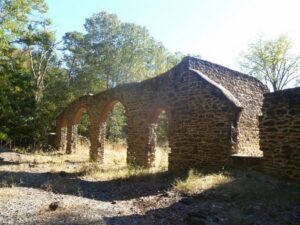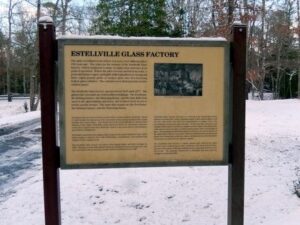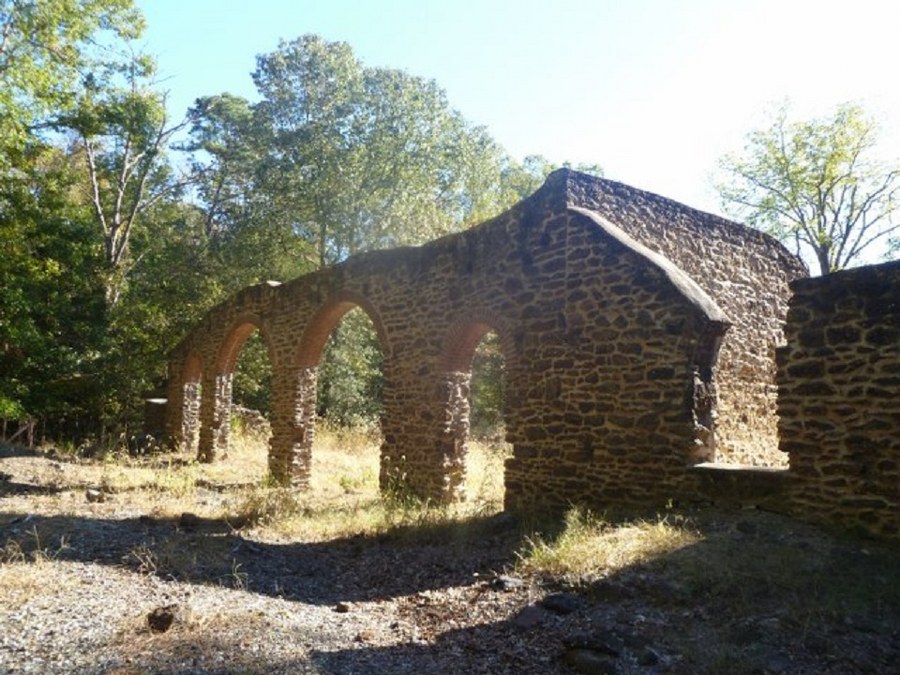
Reembering Estellville
By Nick Leonetti
There are ruins all over South Jersey.
What makes this state so great and so unique are the findings one is bound to stumble upon, especially in the Pinelands. Fortunately for me, my place of employment is practically surrounded by monolithic reminders of the past. A stone’s throw away from the Atlantic County Veterans’ Museum are the remnants of the Estellville Glass Factory, a spot that once was rife with employment and vitality for artisans and workers in the area.
The crumbling remains of what used to be a bustling infrastructure is slowly decaying with time. But there is still enough for any visitor to appreciate the potential it once had. Walls of brick stand tall on either side of where the melting furnace site once burned day and night. There are descriptive markers that describe the Pot House site and the Flattening House and others. The dirt trail that winds through the desolation also takes visitors to a dock overlooking the Great Egg Harbor River, a sight that is both ethereal and meditative.
But why should anyone care about the decaying remains of an old glass factory? After all, New Jersey is rife with boom-and-bust infrastructure. Whether it is lumber or glass or bog iron, New Jersey has always reinvented itself, using creativity, especially in the Pinelands, with new and intriguing ideas. This particular glass factory is a snapshot in time, a reminder of bleeding-edge technology in the 19th century. We should be thankful that we still have this tangible source of local history that can be examined, touched and contemplated.
Estellville Glassworks was in full swing in the 19th century, specifically from 1825 to 1877. Built by John H. Scott for the Estell family, the factory produced both bottles and window glass, and is reportedly one of the first to do so. At its peak, more than eighty people were employed, blowing molten glass into cylinders, which were sometime flattened, in order to make windowpanes. Scattered throughout the park are bits and pieces of preserved glass that one can take as a keepsake. On a leisurely stroll through the park, it’s rare for an individual not to stumble upon a chunk of emerald glass protruding from the sandy soil below.
Toward the end of the 19th century is when Estellville saw a decline in business. More efficient ways, thanks to the Industrial Revolution, like coal-fueled and steam-powered manufacturing plants, were more efficient and sped up the process. Wood powered plants like Estellville just couldn’t keep up.
Something else that makes Estellville unique is its sandstone structure. Due to the nature of how glass factories in South Jersey operated, they were extremely susceptible to fire and often burned to the ground. The masonry work done at Estellville avoided such a fate and is the reason that much of it still stands today.
Visiting Estellville Glassworks is a fun, easy, and free way to see, first-hand, what our past still has to offer us. It is a living example of what life consisted of way back in the day. Walking over the crumbling remains of this place, one can almost feel the heat from the furnace, smell the sweat of the men who worked until sunset, and hear the faint sound progression emanating from the surrounding forest.

This article is the first in a three-part series highlighting the Estell family, a family who played a crucial role in South Jersey history, yet have all but been forgotten.






